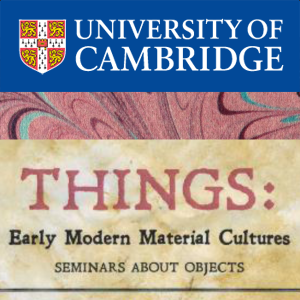Things - 5 February 2013 - Model Things
Duration: 1 hour 44 mins
Share this media item:
Embed this media item:
Embed this media item:
About this item

| Description: |
Professor Simon Schaffer (University of Cambridge)
Automata and Dr Anna Maerker (Kings College London) Model Bodies and Model Experts Abstracts Prof Simon Schaffer: Eighteenth century automata served a very wide range of uses, as things to display or satirise, admire or unmask. Such seemingly self-moving things functioned in a culture fascinated by the workings of the theatre and of the market, especially in juxtaposition of automata with other mobile things of the period, such as spring clocks and water pumps. And what happens when these things now appear on film? Dr Anna Maerker: The Royal Museum of Physics and Natural History 'La Specola' in late-eighteenth-century Florence was famous for its life-sized wax models of the human body, part of a public display of nature that was designed to further public happiness through education and enlightenment. In this talk, I will focus on practices of model making and model use at La Specola to ask how things mediate human relationships and shape social groups. Based on material from my book Model Experts: Wax Anatomies and Enlightenment in Florence and Vienna, 1775–1815, the talk will investigate how model makers articulated their identity through model production, and how model display shaped the relationship between experts and the public. |
|---|
| Created: | 2013-02-07 10:59 |
|---|---|
| Collection: | Things Seminar |
| Publisher: | University of Cambridge |
| Copyright: | Glenn Jobson |
| Language: | eng (English) |
| Keywords: | CRASSH; Things; Simon Schaffer; Anna Maerker; |
| Abstract: | Professor Simon Schaffer (University of Cambridge)
Automata and Dr Anna Maerker (Kings College London) Model Bodies and Model Experts Abstracts Prof Simon Schaffer: Eighteenth century automata served a very wide range of uses, as things to display or satirise, admire or unmask. Such seemingly self-moving things functioned in a culture fascinated by the workings of the theatre and of the market, especially in juxtaposition of automata with other mobile things of the period, such as spring clocks and water pumps. And what happens when these things now appear on film? Dr Anna Maerker: The Royal Museum of Physics and Natural History 'La Specola' in late-eighteenth-century Florence was famous for its life-sized wax models of the human body, part of a public display of nature that was designed to further public happiness through education and enlightenment. In this talk, I will focus on practices of model making and model use at La Specola to ask how things mediate human relationships and shape social groups. Based on material from my book Model Experts: Wax Anatomies and Enlightenment in Florence and Vienna, 1775–1815, the talk will investigate how model makers articulated their identity through model production, and how model display shaped the relationship between experts and the public. |
|---|---|

